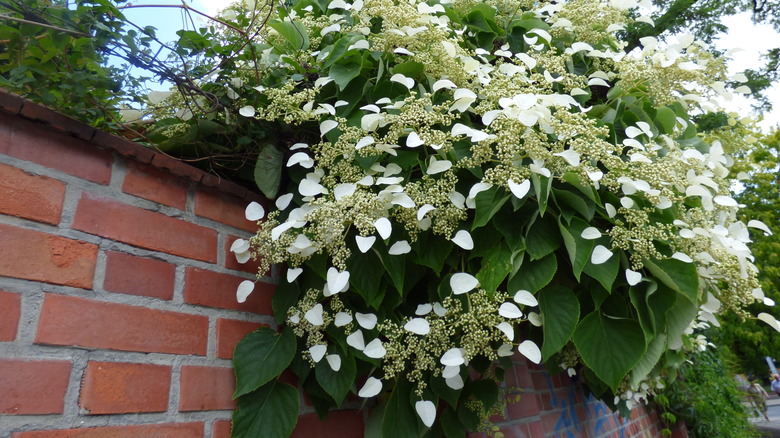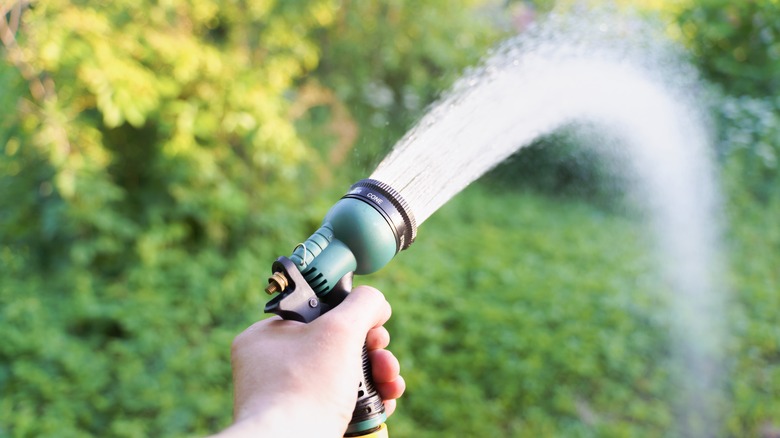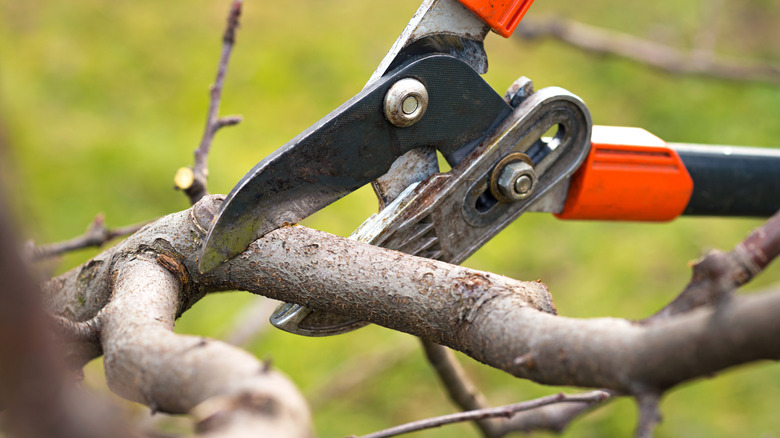How Martha Stewart Gets The Most Out Of Her Climbing Hydrangeas
Martha Stewart loves using climbing hydrangeas around her property, and there are a few ways that she multiplies the number of blooms on each plant. If you want to do the same, follow in her footsteps and choose the right species. Perhaps the best kind to use is the Hydrangea anomala subsp. petiolaris, as this popular variety can grow up to 40 feet tall, meaning it will most likely produce more blooms than shorter types. Once you've chosen the right plant, you then need to properly care for it.
"Multiply the number of bold, bright blooms on your woody hydrangea shrubs by making sure your plants have the right amount of sunlight and soil, a fertilizer designed to increase bloom quantity, and a pruning and deadheading routine that keeps them flowering all season long," Stewart wrote, per Instagram. Therefore, start by considering the location of your plant. If you place your hydrangeas in full sunlight, they could produce fewer blooms, so make sure it has partial shade. The right soil is also important, as clay types usually can't drain, which could stunt growth. Also, consider pH levels when fertilizing your plant, as you don't want to give it too much nitrogen. For most types, it's best to only add fertilizer two times, once in the spring and once in the mid-summer.
How to correctly water your hydrangeas
Another important thing to consider is how to correctly water your climbing hydrangeas, as this will allow them to grow tall and produce well. While this species doesn't like to sit in a puddle of water, they also shouldn't have dry roots either, so make sure the soil is always moist. When watering, place the can or the hose directly on the bottom of the plant to keep the blooms and leaves dry. Further, do this in the early morning, as you don't want to water your flowers in the middle of the day when the sun is the strongest, potentially causing them to wilt.
The amount you need to water your plant depends upon your specific climate and could vary from once a day to once a week. However, you should also water your plants more often in certain scenarios. "For the first year or two after planting and during any drought, be sure hydrangeas get plenty of water," Martha Stewart wrote on her blog. "The leaves will wilt if the soil is too dry."
How to correctly prune your hydrangeas
It's important to prune your climbing hydrangeas so that they don't overtake your yard. "Be prepared to prune the vines annually to keep them off windows and frames, and even from spreading like a ground cover in the garden," per Martha Stewart. "Their enthusiasm to grow knows no bounds." However, at the same time, you don't want to cut them down too much, as this will greatly diminish the number of flowers your plant produces.
It's best to prune most types in the spring and not the fall, as cutting them later in the year could cause you to remove future blooms that could potentially open up in the following spring season. Also, if you want your plants to be as lush as possible, only cut off dried blooms, and don't deadhead often. If you need to prune during the summer, only do so to repeat blooming types after the first bunch of flowers have started to fade, as this will allow another batch to grow before the season is over.


